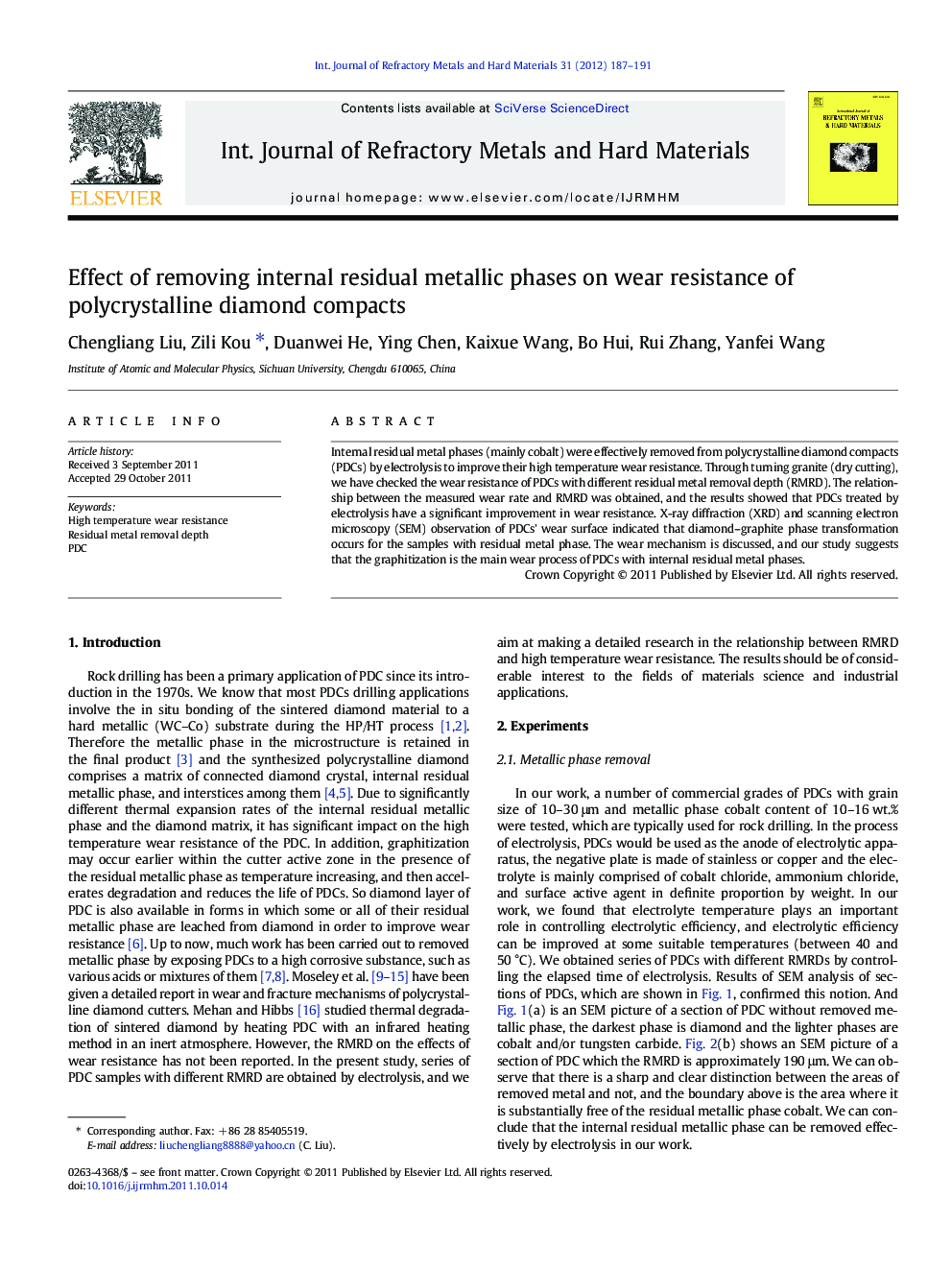| Article ID | Journal | Published Year | Pages | File Type |
|---|---|---|---|---|
| 1603837 | International Journal of Refractory Metals and Hard Materials | 2012 | 5 Pages |
Internal residual metal phases (mainly cobalt) were effectively removed from polycrystalline diamond compacts (PDCs) by electrolysis to improve their high temperature wear resistance. Through turning granite (dry cutting), we have checked the wear resistance of PDCs with different residual metal removal depth (RMRD). The relationship between the measured wear rate and RMRD was obtained, and the results showed that PDCs treated by electrolysis have a significant improvement in wear resistance. X-ray diffraction (XRD) and scanning electron microscopy (SEM) observation of PDCs' wear surface indicated that diamond–graphite phase transformation occurs for the samples with residual metal phase. The wear mechanism is discussed, and our study suggests that the graphitization is the main wear process of PDCs with internal residual metal phases.
Graphical abstractInternal residual metal phases were effectively removed from polycrystalline diamond compacts (PDCs) by electrolysis to improve their high temperature wear resistance. The relationship between the measured wear rate and residual metal removal depth (RMRD) was obtained, and the results showed that PDCs treated by electrolysis have a significant improvement in wear resistance.Figure optionsDownload full-size imageDownload as PowerPoint slideHighlights► High temperature wear resistance of PDCs can be significantly improved by removing residual metal phase. ► The relationship between wear rate and residual metal removal depth was obtained. ► Graphitization is the primary wear mechanism of PDCs with residual metal phases.
